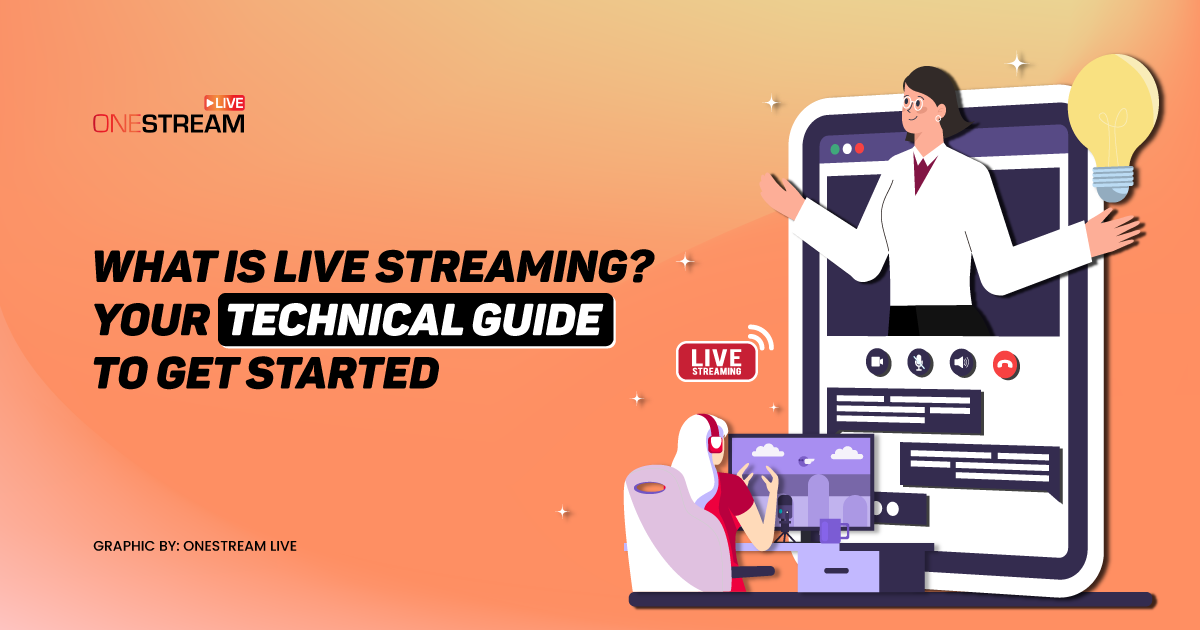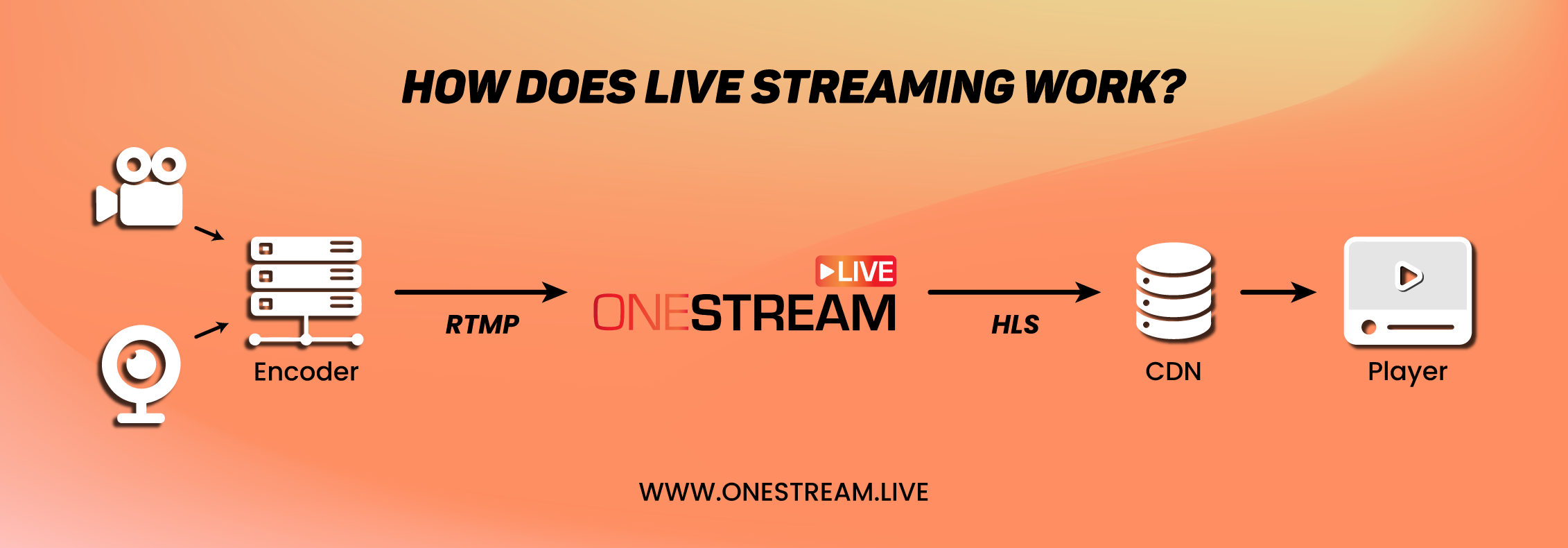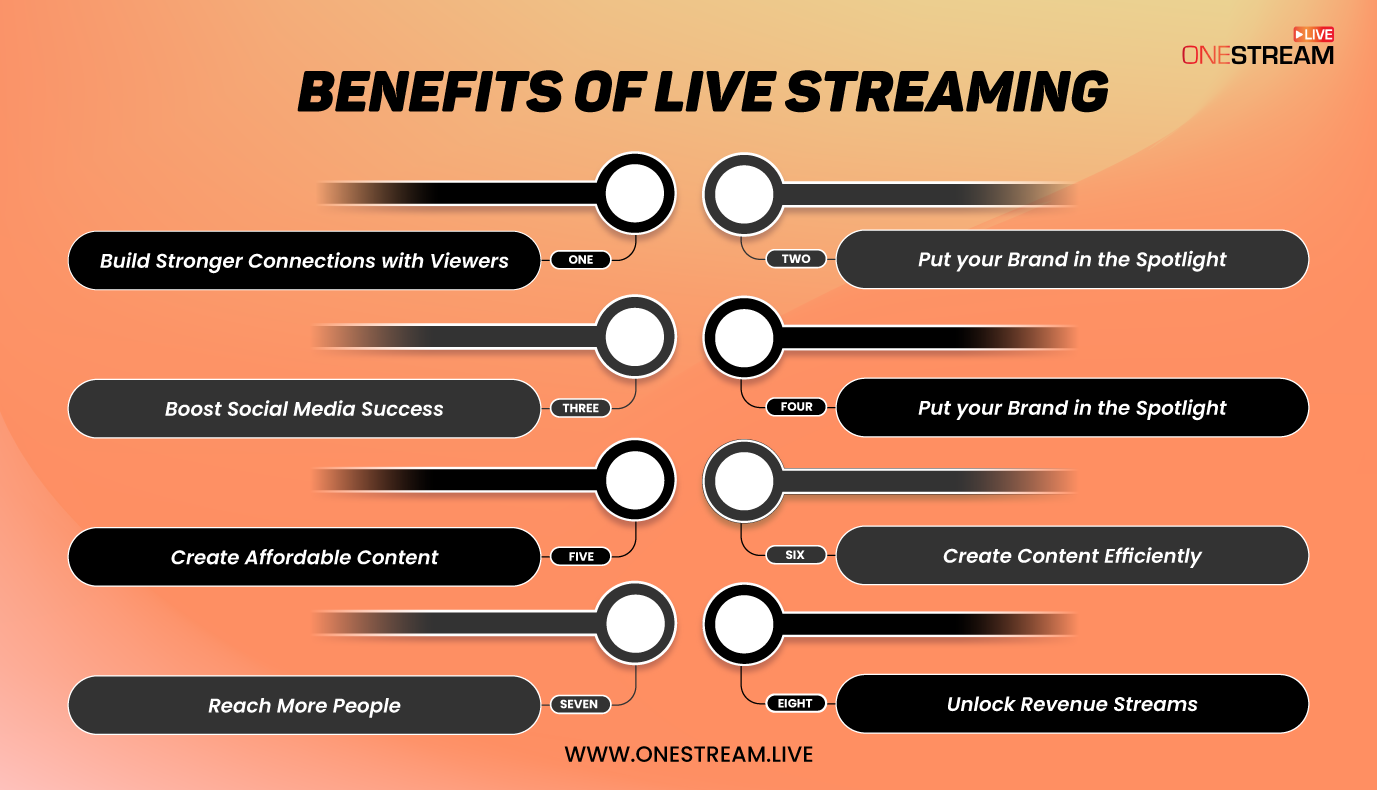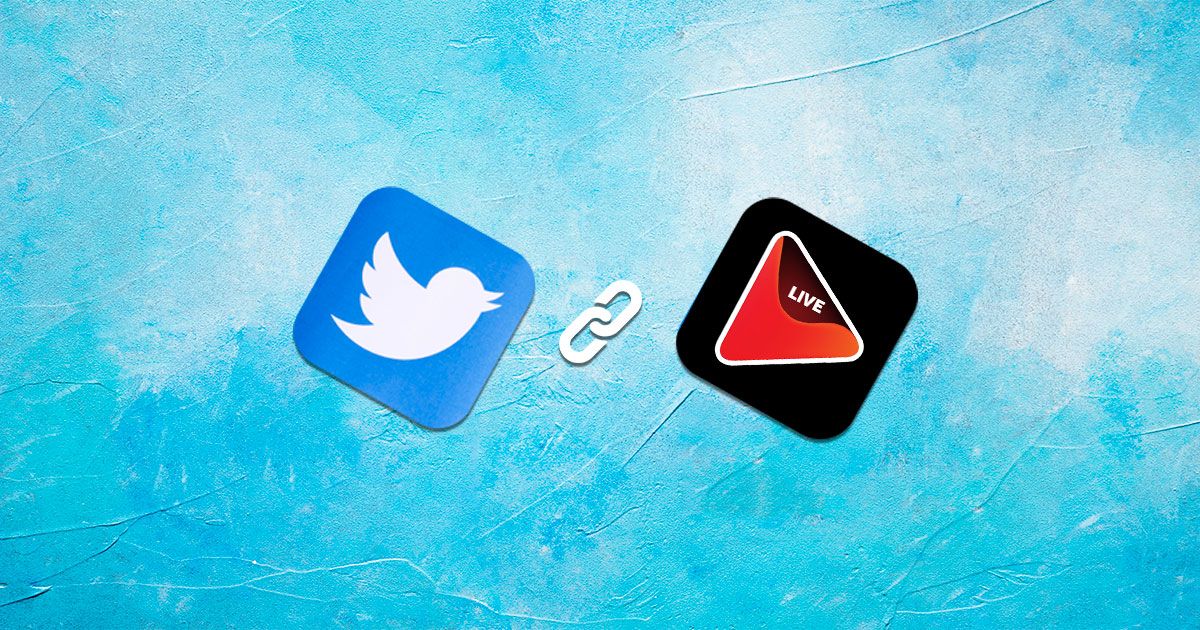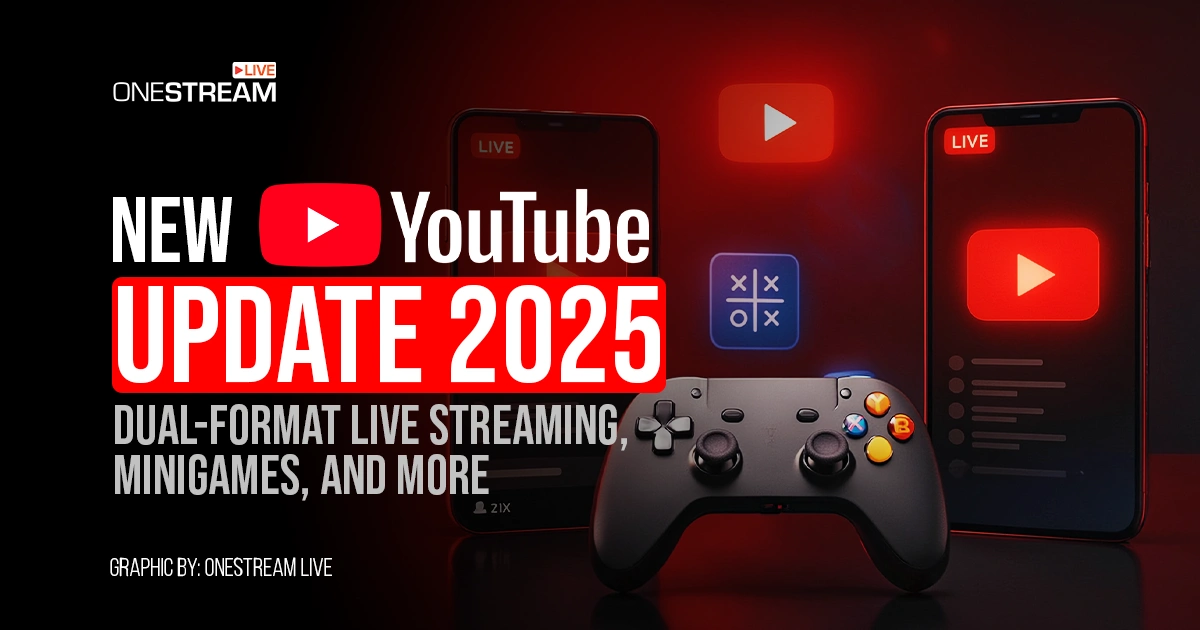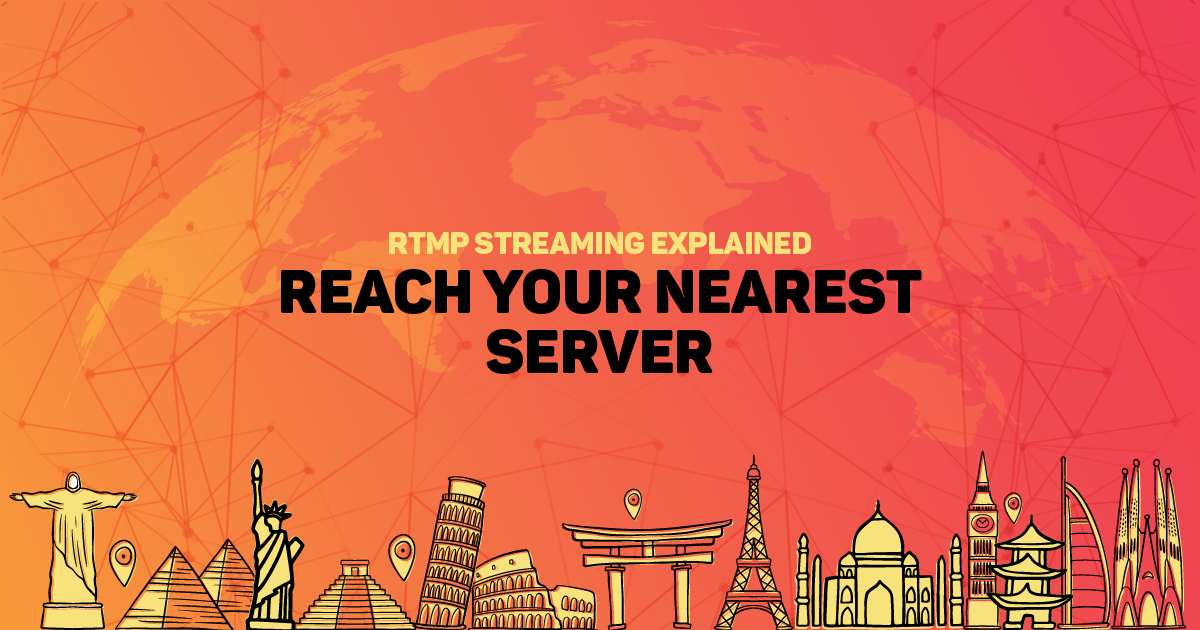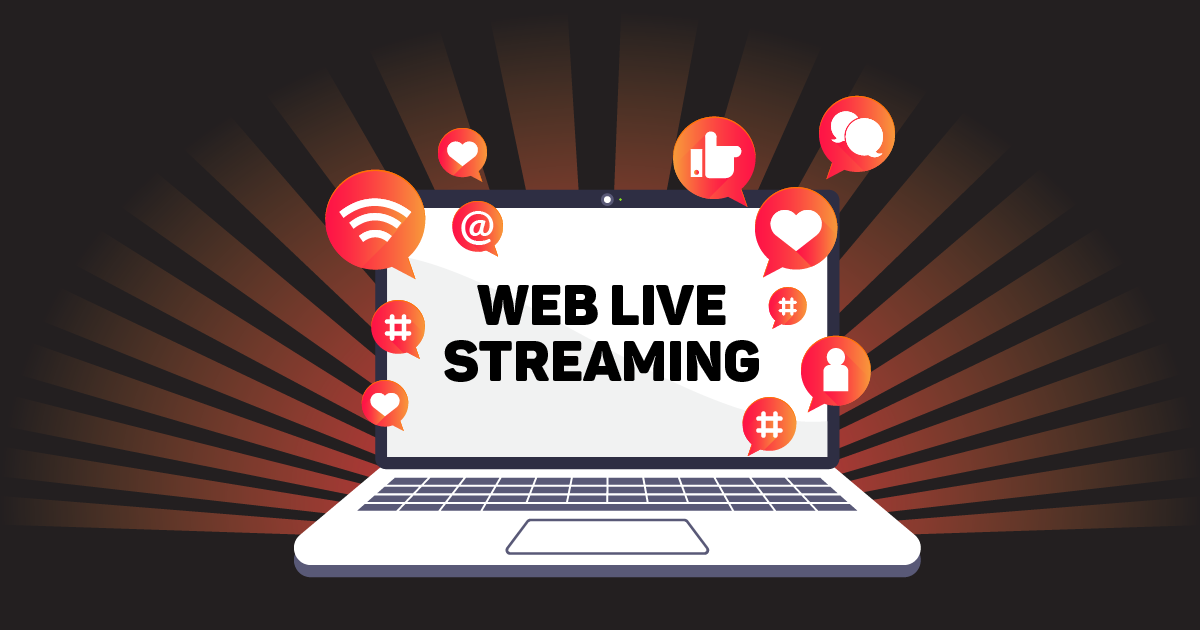Do you want to know more about the next big trend in online content creation? Live streaming could be just what you’re looking for! With live video broadcasting across the web, creators and businesses are able to interact with their fans in real time. From gaming streams to cooking demos, there are many ways to use live streaming for engaging content. But how does it work? And why is this technology important for your upcoming project or event? In this guide, we’ll look at all the ins and outs of live streaming – so get comfy and let’s get started!
What is Live Streaming?
Live streaming is a way to share videos or other content in real time over the internet. It allows people to broadcast their events, activities, or performances online as they happen so that others can watch and participate at the moment. Live streaming can be done through various platforms or apps, enabling content creators, businesses, and individuals to connect with their audiences in an interactive and engaging way. It’s like having a virtual front-row seat to a concert, a sports game, a conference, or any other event, right from the comfort of your own device. Live streaming has become increasingly popular in recent years, revolutionizing how we share and consume content online.
How Does Live Streaming Work?
Live streaming works by capturing video and audio content in real time and encoding it into a digital format that can be transmitted over the internet. The process typically involves the following steps:
1️⃣ Video Capture:
A camera and microphone are used to capture the video and audio that will be streamed. This can be done with a dedicated camera, a webcam, or a smartphone.
2️⃣ Encoding:
The captured video and audio are then encoded into a digital format, such as H.264, which reduces the file size and prepares it for transmission over the Internet. This encoding process compresses the data so that it can be efficiently transmitted over the internet.
3️⃣ Segmentation:
Videos contain much digital information, so they take longer to download than smaller files like PDFs or images. To make it practical for streaming over the internet, videos are divided into smaller segments that are only a few seconds long. This allows for faster and smoother playback, as viewers can start watching the video while the rest of it is still being downloaded.
4️⃣ Transmission:
The encoded content is then transmitted over the internet using a streaming protocol, such as RTMP (Real-Time Messaging Protocol), HLS (HTTP Live Streaming), or DASH (Dynamic Adaptive Streaming over HTTP), to an online platform or streaming service.
5️⃣ Distribution:
The online platform or streaming service receives the live stream and distributes it to viewers using CDN (Content Delivery Network), who can access it using their internet-connected devices, such as computers, smartphones, or smart TVs.
6️⃣ Playback:
The CDN (Content Delivery Network) sends the live stream to all the viewers who are watching. Each viewer’s device receives the video data, decodes it, and turns it into a viewable video. This is done by a media player, which can be a dedicated app or a video player within a web browser, that interprets the data and plays the video on the viewer’s screen.
Other Technical Aspects of Live Streaming
The following are some additional Technical Aspects related to live streaming:
👉 CDN:
A Content Delivery Network (CDN) is used in live streaming to efficiently distribute and deliver video and audio content to viewers around the world. CDNs consist of multiple servers in different geographic locations, known as edge servers, that store and serve the content to viewers from a server closest to their location. This helps reduce the load on the source server and minimizes the latency, or delay, in delivering the content, resulting in faster load times, less buffering, and a better viewing experience for live stream viewers.
👉 Bandwidth:
Bandwidth in live streaming means the amount of data sent over the internet during a live stream. It decides how much data is needed to be sent from the source to the viewers’ devices to keep the stream smooth and uninterrupted. High-quality streams with high resolutions and bitrates need more bandwidth, whereas low-quality streams with low resolutions and bitrates need less. Having enough bandwidth is important to make sure viewers have a smooth and uninterrupted live streaming experience.
👉 Caching:
Caching in live streaming is the practice of storing frequently accessed video and audio content in a temporary storage location, such as a local server or memory, to improve the delivery speed and efficiency of the content. Caching helps reduce the load on the source server and minimizes the need to repeatedly fetch the same content, resulting in reduced buffering, faster load times, and smoother playback for viewers.
👉 Video Encoding & Transcoding:
Video encoding and transcoding in live streaming refer to the process of compressing, formatting, and optimizing the video and audio content for delivery over the internet. Encoding involves compressing the raw video and audio into a format suitable for streaming, while transcoding involves converting the encoded video and audio into multiple bitrates and resolutions to ensure compatibility with different devices and internet speeds. Proper encoding and transcoding are essential for efficient and high-quality live streaming.
Read More: Live Streaming Glossary of Most Common Term
👉 Frame Rate per Second:
FPS stands for Frames Per Second in the context of live streaming. It refers to the number of individual frames, or images, that are displayed per second in a video stream. In live streaming, FPS determines how smooth the video appears to viewers. Higher FPS results in smoother motion, while lower FPS may result in choppiness or stuttering in the video. Common FPS values for live streaming include 30 FPS and 60 FPS, though other frame rates may also be used depending on the specific requirements of the live stream and the platform being used for streaming.
👉 Bitrate:
Bitrate in live streaming refers to the amount of data that is transmitted per second during a live stream. It measures the rate at which video and audio data is being sent from the source to the viewers’ devices. Higher bitrates result in higher-quality video and audio streams with more detail but require more bandwidth to transmit. Lower bitrates result in lower-quality streams with less detail but require less bandwidth to transmit. Bitrate is an important consideration when encoding and streaming live video to ensure the stream is optimized for the available bandwidth and devices of viewers.
👉 Adaptive Bitrate Streaming:
ABR streaming stands for Adaptive Bit Rate streaming, and it is a technique used in live streaming to dynamically adjust the quality of video and audio based on the viewer’s internet connection. ABR streaming allows for automatic video quality adaptation in real-time so that viewers with varying internet speeds can still have a smooth viewing experience without buffering. When the internet connection is strong, higher-quality video is served; when the connection is weaker, lower-quality video is served to prevent interruptions in the stream.
Important Live Streaming Protocols
Some important live streaming protocols include:
1️⃣ HTTP-based Protocols:
These protocols, such as HTTP Live Streaming (HLS) and Dynamic Adaptive Streaming over HTTP (DASH), use standard HTTP(S) protocols to deliver live video and audio content over the internet. They allow for adaptive streaming, where the quality of the stream is dynamically adjusted based on the viewer’s internet connection, and they are widely supported by web browsers and devices.
2️⃣ Real-Time Messaging Protocol (RTMP):
TMP is a proprietary protocol developed by Adobe for live streaming. It allows for low-latency streaming and is commonly used for professional live streaming applications. However, it requires a dedicated media server and specialized encoding software.
3️⃣ Dynamic Adaptive Streaming over UDP (DASH-UDP):
DASH-UDP is an emerging protocol that uses User Datagram Protocol (UDP) instead of HTTP for delivering live streaming content. It aims to reduce latency and improve the efficiency of live streaming, making it suitable for low-latency applications such as live sports.
Live Streaming Equipment
1️⃣ Camera:
A camera is needed to capture the video content for live streaming. It can be a webcam, a camcorder, a DSLR, or a smartphone with a good-quality camera.
2️⃣ Microphone:
A microphone captures clear audio for the live stream. It can be a built-in microphone on the camera or a separate external microphone, such as a USB or lavalier microphone.
3️⃣ Encoder:
An encoder converts the raw video and audio captured by the camera and microphone into a format suitable for live streaming over the internet. It can be a hardware or software encoder running on a computer.
4️⃣ Live Streaming Solution:
A live streaming solution takes care of all the technical aspects of live streaming, making it easy for content creators and businesses to share their content in real-time. It handles the encoding of video and audio content into a digital format and the transmission of the encoded data and distribution over the internet. Moreover, it provides ample bandwidth to support live streaming on multiple social media platforms and websites simultaneously, ensuring the content reaches a wide audience. This eliminates the need for content creators to worry about the technical complexities of live streaming and allows them to focus on creating engaging content while the solution takes care of the rest.
💡 Pro-Tip: Live streaming solutions like OneStream Live offer a user-friendly platform that allows content creators to easily go live using their webcam, laptop, or smartphone. All you need to do is log in to the platform, and you can start live streaming on popular social media platforms such as Facebook, YouTube, Twitch, LinkedIn, Twitter, TikTok, Instagram, Amazon Live, and many more – all at the same time. OneStream Live takes care of the encoding and distribution process for you, eliminating the technical complexities of live streaming. This makes it seamless and hassle-free to broadcast your events, reaching a wider audience across multiple platforms and websites simultaneously.
With OneStream Live, you can focus on creating engaging content while the platform handles the rest, making live streaming accessible and convenient for content creators and businesses alike.
Top 5 Live Streaming Use Cases
Live streaming has a wide range of uses across different industries and domains. Some common uses of live streaming include:
1️⃣ Entertainment:
Live streaming is widely used for broadcasting concerts, music festivals, sports events, and gaming sessions, allowing fans to watch their favorite artists, teams, or gamers in real-time.
2️⃣ Webinar & Webcasts:
Webinars and webcasts are used by individuals, businesses, educational institutions, and organizations to deliver presentations, workshops, training sessions, product demos, and other interactive content to a remote audience in real-time via live streaming over the internet.
3️⃣ Business and Marketing:
Live streaming is used for product launches, virtual conferences, webinars, and Q&A sessions, providing businesses a platform to engage with their audience, showcase products or services through the Live Sales feature, and drive sales.
4️⃣ News and journalism:
Journalists utilize mobile live streaming tools like OneStream Live to efficiently capture and broadcast news events, interviews, and other happenings in real-time from the field using their smartphones or mobile devices. By using mobile live streaming, journalists can quickly share news updates with their audience, engage with them, and provide on-the-spot coverage without requiring expensive video production equipment.
5️⃣ Social media and content creation:
Live streaming enables users and content creators to share their own videos, events, and experiences with an online audience in real-time, fostering a sense of community, engagement, and interaction. By providing a platform for authentic and spontaneous content creation, live streaming empowers users to showcase their creativity, perspectives, and stories dynamically and interactively, further enhancing the user-generated content experience.
Benefits of Live Streaming
Live streaming offers a wide range of benefits for content creators, businesses, and viewers alike. Some of the key benefits of live streaming include:
🏋️♂️ Build Stronger Connections with Viewers
Live streaming allows for real-time interaction, authenticity, and personalized content, which helps build stronger connections with viewers. Features like live chat and comments enable engagement with viewers, fostering a sense of community. The transparency of live streaming allows viewers to see the genuine side of businesses and brands, leading to trust, and tailored live streams cater to viewer interests, creating a more personalized experience that strengthens the connection.
📈 Reach More People
Live streaming helps content creators and businesses reach more people by broadcasting their content on multiple social media platforms and websites at the same time. This increases visibility and exposure to potential viewers. Live streaming also encourages viewers to share the live stream with others, expanding the reach through word-of-mouth and social media shares. Additionally, recorded live streams can be repurposed for on-demand viewing, further extending the content’s reach.
🔦 Put your Brand in the Spotlight
Live streaming can put your brand in the spotlight by providing an interactive platform to showcase your products, services, or events in real time. It allows you to engage directly with your audience, answer questions, and provide valuable insights, creating a memorable brand experience. The dynamic and engaging nature of live streaming can help your brand stand out, capture attention, and leave a lasting impression, ultimately putting your brand in the spotlight.
✨ Create Content Efficiently
Live streaming can help create content efficiently by providing a real-time and interactive platform to generate content on the go. It eliminates the need for post-production editing and allows for immediate content creation and distribution. Additionally, live streaming can be repurposed for on-demand viewing, extending the lifespan of the content and maximizing its value, making it a time-effective way to create content efficiently.
📢 Boost Social Media Success
Live streaming can boost social media success by providing engaging and interactive content that encourages viewer participation and shares. Live streams can attract more viewers and followers to your social media accounts, increasing your reach and engagement. The real-time nature of live streaming allows for timely and relevant content that can generate buzz, increase engagement, and ultimately enhance your social media success.
💰 Create Affordable Content
Live streaming has emerged as a cost-effective way to create content due to its real-time nature, which eliminates the need for expensive post-production and editing. Content creators can engage with their audience directly, resulting in authentic and unscripted content that can be produced with minimal equipment and setup costs.
💵 Unlock Revenue Streams
Through features like virtual tips, donations, and sponsorships, content creators can monetize their live streams in real time, providing a direct and immediate source of income. Live streaming also enables creators to engage with their audience in real time, leading to opportunities for product sales, merchandise promotion, and affiliate marketing, further diversifying their revenue streams and increasing their earning potential.
🕰️ Create Content Anywhere, Anytime
Live streaming has revolutionized content creation by providing the flexibility to create content anywhere, anytime. With just a mobile device and an internet connection, content creators can go live from virtually any location, eliminating the need for elaborate setups or studios. This allows for spontaneous and on-the-go content creation, whether it’s live events, behind-the-scenes footage, or impromptu Q&A sessions, giving creators the freedom to connect with their audience in real-time from anywhere in the world.
Final Thoughts
In conclusion, live streaming is a powerful content creation tool that allows creators to engage with their audience in real time, and with the right tools, it can be an accessible and seamless process. OneStream Live is an excellent option for live streaming, providing a user-friendly platform that allows creators to stream to multiple social media platforms easily and the web simultaneously, opening up opportunities for wider audience reach and engagement. Whether you’re a beginner or an experienced content creator, OneStream Live can be a valuable live streaming solution to help you get started with live streaming and create compelling content across various platforms with ease.
OneStream Live is a cloud-based live streaming solution to create, schedule, and multistream professional-looking live streams across 45+ social media platforms and the web simultaneously. For content-related queries and feedback, write to us at [email protected]. You’re also welcome to Write for Us!

